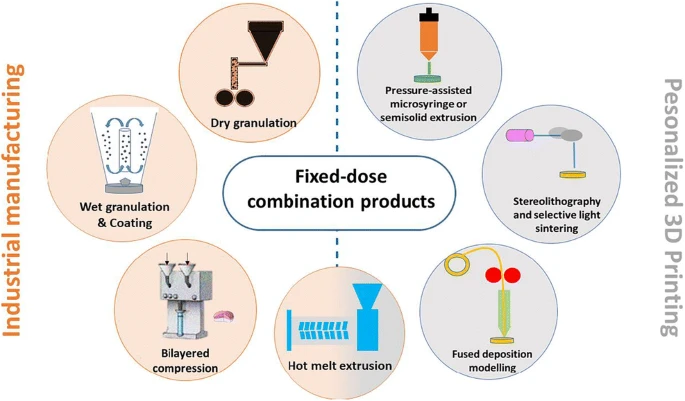
Image Source: springernature.com
India, with its vast pharmaceutical industry, has witnessed a significant rise in the use and production of Fixed Dose Combinations (FDCs) in recent years. FDCs refer to combinations of two or more active pharmaceutical ingredients combined into a single dosage form.
From the UPSC perspective, understanding the implications of this proliferation is crucial, as it intertwines with various aspects of public health, regulation, and pharmaceutical policy in India.
Health Concerns and Risks
The unchecked proliferation of FDCs raises concerns about their safety, efficacy, and potential adverse effects on patients. Often, these combinations lack sufficient clinical evidence to support their use and may lead to drug resistance, side effects, and complications.
Furthermore, inadequate regulation and monitoring of FDCs contribute to the risk of irrational prescribing practices and misuse, impacting public health on a large scale.
Regulatory Challenges
India's regulatory framework for FDCs has faced challenges in keeping up with the rapid influx of these combinations. The approval process and monitoring mechanisms need strengthening to ensure that only rational and scientifically validated FDCs enter the market.
There have been instances of FDCs being marketed without proper approval or assessment, highlighting the need for a robust regulatory framework to safeguard public health.
Policy Reforms and the Way Forward
Addressing the issue of FDC proliferation requires a multi-faceted approach involving regulatory reforms, stringent monitoring, and fostering collaboration between the pharmaceutical industry, regulatory bodies, and healthcare professionals.
Policy reforms should prioritize evidence-based assessment of FDCs, stringent post-marketing surveillance, and transparent dissemination of information to healthcare providers and the public.
Furthermore, promoting rational prescribing practices, enhancing pharmacovigilance systems, and fostering research on FDCs' efficacy and safety are essential steps towards mitigating the risks associated with their widespread use.
Conclusion
The proliferation of Fixed Dose Combinations presents a complex challenge that intersects with public health, regulatory oversight, and pharmaceutical policies in India. To safeguard the population's health, it's imperative to address the concerns posed by unregulated FDCs through robust regulatory frameworks, evidence-based assessments, and concerted efforts from stakeholders.
As India navigates this issue, prioritizing the safety and efficacy of pharmaceutical combinations will be critical for ensuring the well-being of its citizens.